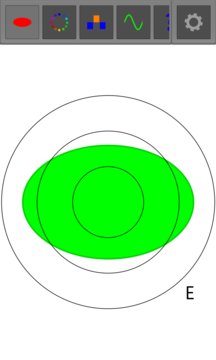Quantz Tuner is a quantitative music visualization app. It combines real-time pitch detection with unique visualizations to create a completely new way to ... Read More > or Download Now >
Quantz Tuner for Windows Phone
Tech Specs
- • Version: 2.1.1.0
- • Price: 0
- • Content Rating: Not Rated
- • Requirements: Windows Phone 8.1
- • File Name: Quantz-Tuner.AppX
User Ratings

- • Rating Average:
- 0 out of 5
- • Rating Users:
- 0
Download Count
- • Total Downloads:
- 11
- • Current Version Downloads:
- 11
- • Updated: February 16, 2016
More About Quantz Tuner
VIBRATO CIRCLE: This tool shows your pitch as a circle and as your pitch is flattens, the circle flattens. As the pitch goes sharp the circle stretches vertically and when the circle is perfectly round your pitch is in tune. Vibrato Circle is sensitive enough to show the speed and pitch fluctuations of your vibrato.
TEACHING TIPS: Beginner to advanced players can use this tool to watch their pitch as they play long tones and slow scales. When teaching vibrate, use vibrato circle to demonstrate what it should look like and have students try to imitate the motion of the circle. The real-time, visual feedback helps students to hear the small pitch fluctuations in vibrato and they learn how to imitate it very quickly. Advanced players can gain greater control over their vibrato speed and depth. Vibrato Circle will help you examine your vibrato qualities and make changes as desired.
PITCH LINE: This super sensitive line shows your pitch in real time on a graph and records what you play so that you can look back at your pitch history. You can even use this tool to learn to play quartertones and microtones. Pitch line is sensitive enough to detect your vibrato’s speed, depth, and regularity throughout your instrument or vocal range.
TEACHING TIPS: Use this tool to help students explore what their pitch is doing when they begin notes, play long tones and end notes. They can learn all about how volume and range affect pitch by watching the tool as they play. Fix those sharp C#’s and stop going flat at the ends of phrases! Pitch Line is a fantastic tool to observe exactly what your vibrato does when you play. It exposes everything and allows you to gain greater flexibility in speed and depth.
NOTE BAR: This tool works similarly to Pitch Line, except that pitch is represented by a bar instead of by a dynamic line. Note Bar is best used to examine pitch and rhythm issues.
TEACHING TIPS: For beginners, record them playing a tune and then pause and scroll back to show them what they played. They love to see how they did and you can point out areas of improvement or mistakes. You can also demonstrate note lengths and rhythms and have a student imitate you. By adjusting the Settings of this tool you can cause the visualization to respond only when a note is within a specified range of the correct pitch. This makes it more challenging for intermediate and advanced students and teaches them to play in tune. Another fun way to use this tool is to record yourself playing an entire piece and observe the differences in structure, tonality and use of rhythm of major composers like Bach and Debussy.
COLOR FIFTHS: This tool shows the color wheel superimposed upon the circle of fifths. When you play a given note the appropriate circle will respond by growing. When you stop playing that note the circle shrinks. Colors across from each other on the circle are opposite colors, just as the keys across from each other are also opposite. Likewise, colors next to each other are similar, just as the keys next to each other are closely related. The natural relationship of tonality and color is exposed and you can observe the color palates and patterns of different types of scales.
TEACHING TIPS: You can adjust the grow/shrink rates of the circles making it more or less challenging to move them. This can be fun for students learning to play long tones or hold a pitch steady. How big can you make the circle grow in one breath? Play your scales while observing the circles, and patterns are revealed. You can also adjust the settings so that the circles will only grow when your pitch is more accurate, this is challenging for more advanced players.


